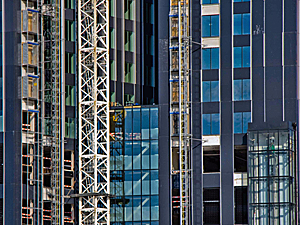Rise of Green Building Codes Attracts Legal Challenges

Recently I had dinner with a long-time reader of Green Building Law Update. I was frank with him, and I will be frank with you. I will be doing two things this year with the blog:
1. I am going to stop talking about LEEDigation as much.
2. I am going to talk more about the green building codes, and the challenges to those codes that are occurring throughout the country.
A trend seems to be developing across the country in the green building world. Traditional builders and manufacturers are fighting against green building codes and programs. You can expect an increase in these types of challenges in 2011.
 One of the first reported legal challenges to a green building code occurred in New Mexico with the caseAir Conditioning, Heating, and Refrigeration Institute (ACHRI) v. City of Albuquerque. The case focused on the Albuquerque Energy Conservation Code passed by the city on September 17, 2007. The goal of the code essentially was to create greater energy efficiency in buildings and products. As often happens with new regulations, numerous parties were unhappy with the code. Three trade associations representing HVAC product manufacturers, distributors and installers challenged the code, and the case was ultimately decided on September 30, 2010, by Judge Martha Vazquez of the U.S. District Court for the District of New Mexico (pictured right).
One of the first reported legal challenges to a green building code occurred in New Mexico with the caseAir Conditioning, Heating, and Refrigeration Institute (ACHRI) v. City of Albuquerque. The case focused on the Albuquerque Energy Conservation Code passed by the city on September 17, 2007. The goal of the code essentially was to create greater energy efficiency in buildings and products. As often happens with new regulations, numerous parties were unhappy with the code. Three trade associations representing HVAC product manufacturers, distributors and installers challenged the code, and the case was ultimately decided on September 30, 2010, by Judge Martha Vazquez of the U.S. District Court for the District of New Mexico (pictured right).
While the legal challenge focused on many portions of the code, I am focusing on Volume I, which included requirements for commercial buildings and multi-family buildings.
In order to comply with Volume I of the code, a building had to satisfy one of three paths:
- The building must achieve LEED certification;
- The proposed building must be 30 percent more energy efficient than a baseline building; or
- The Heating, Ventilation, and Air Conditioning (HVAC) system and equipment must comply with minimum energy efficiency standards.
There is a key difference between the first two compliance paths and the last. The first two paths can be described as performance-based because the building must perform in a particular manner. The last path is a prescriptive compliance path, which means it focuses on the products that go into a building.
Judge Vazquez relied on the legal theory of federal preemption to strike down the code's prescriptive compliance path:
"The Court concludes that the prescriptive provisions of Volume I requiring the use of heating, ventilation, or air conditioning products or water heaters with energy efficiency standards more stringent than federal standards are regulations that concern the energy efficiency of covered products and, therefore, are preempted as a matter of law."
Judge Vazquez pointed to the National Appliance Energy Conservation Act, which expressly preempted product energy efficiency standards:
"A standard prescribed or established under section 6313(a) of this title shall, beginning on the effective date of such standard, supersede any State or local regulation concerning the energy efficiency or energy use of a product for which a standard is prescribed or established pursuant to such section."
Judge Vazquez went on to uphold performance path one and two because the plaintiffs presented a "cursory argument" and "very few material facts" in support.
The question remains whether a court could find federal preemption of a LEED-based code if properly argued by a plaintiff.
Theoriginal versionof this post appeared on theGreen Building Law Updateand is reprinted with permission.
Image CC licensed by Flickron1stsite.




